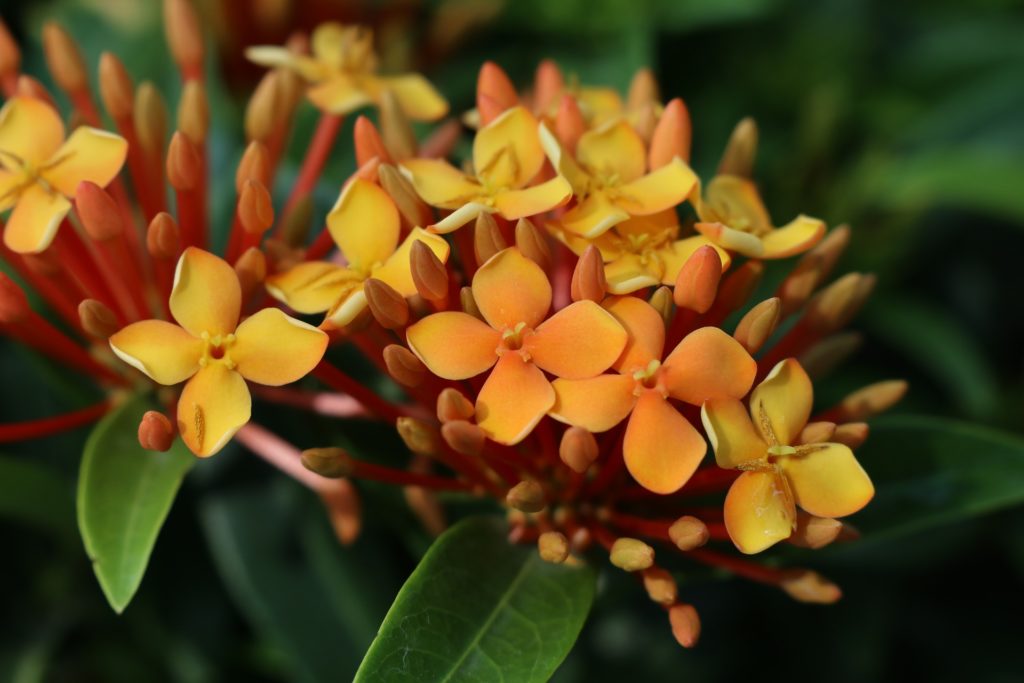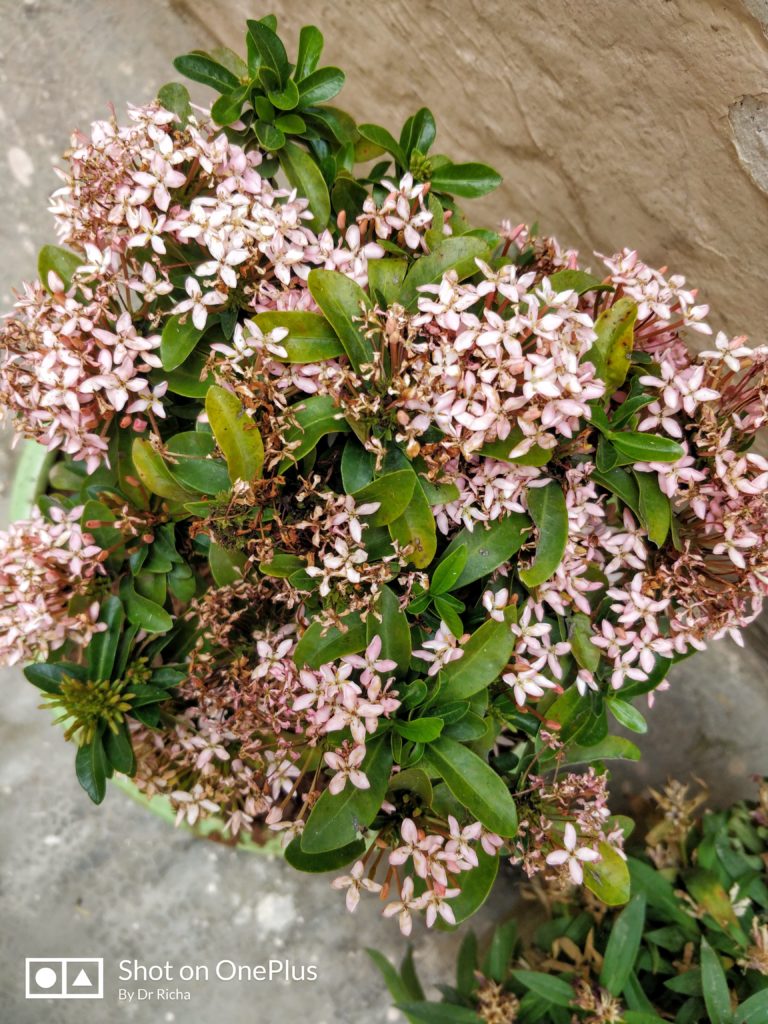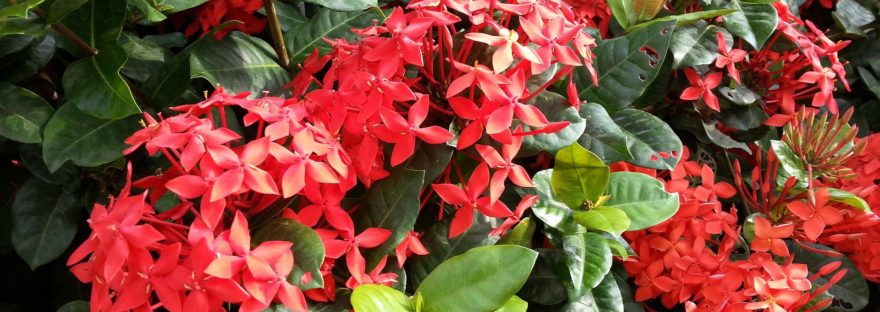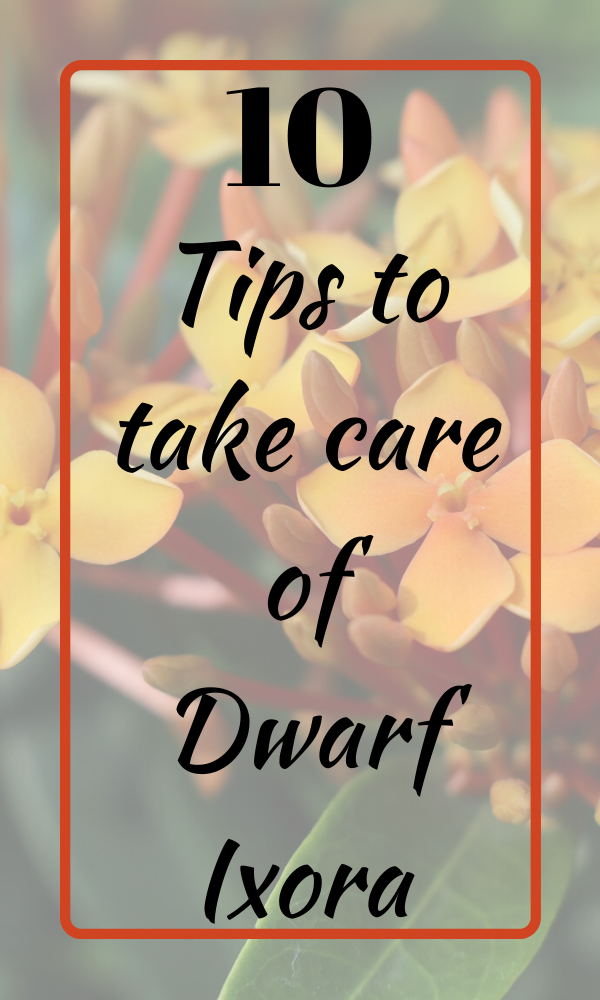Post 4: #PlantCare #Gardening
Table of Contents
Ixora is a shrub bearing beautiful clusters of flowers. They’re good plants that could bear heat well and are low maintenance so are very good plants for indoor and outdoor both. These plants grow up to 2 ft in height they’re great as hedges in the garden. They’re evergreen plants & great for warm climate.
How to take care of Dwarf Ixora?
Temperature
They love the warm climate. They could withstand temperature close to 0°C but plants love temperature above 15°C. The ideal temperature range is 10-30°C (65-70°F). they should be protected from harsh heat & would prefer a window with good sunlight. They’re happy at room temperature.

Watering
They love moist soil but not wet soil. We should only water when the top layer of soil is dried out. The watering need for plant depends on:
- Temperature
- Sunlight exposure
- Container/ in ground
- Season
A well-draining container should be used for planting to avoid overwatering since the plant may suffer from root rot if it sits for too long in soggy soil.
Lighting
These plants love sunlight. They need a few hours of direct sunlight in a day. Ideally, they should get morning sun and shade during the afternoon. They need adequate sunlight for better health of the plant. In less sunlight, the flowering is less, and in the harsher sun the flowers wilts & drops.
If the plant is indoor the keeps it on the well-lit window with direct sunlight, the indoor is cool enough for the plant to tolerate it well. In case you have seen any drooping the reposition the plant away from sunlight.
The flowers would wilt, droop or fall in harsh light.
[Tweet “Ixora loves sunlight and warm climate.”]
Humidity
They love moderate to high humidity. You could consider sprinkling the plant frequently to keep them from drying.
Repotting
Ixora’s are slow growers so they don’t need repotting frequently once in 1-2 years. They’re fussy about the soil they need slightly acidic pH 5-6 range. Add acidic compost/ mulch over the plant to maintain the pH & moisture.
Pruning
They won’t grow more than 2 ft in height. They’re the best plants to be used as hedges. The plant is very versatile & could be reshaped easily. They could shape well. They tolerate pruning well & could grow back easily. Pruning should preferably be done during springs.
Flowering
Flowers grow in the clusters & flower is shaped like a star. They could be found in various colors like red/peach/pink/white/yellow. They’re non-toxic plants.

Fertilization
They don’t need fertilization during winters but during spring & summers, you should fertilize every 2 weeks to keep them blooming.
Propagation
They propagate from the seeds that are produced after flowers in for of berries.
From the cutting of a branch. Plant it in a sunny location in a pot for 4-6 weeks and check for roots if it has taken up.
Common problems
- Pests like spider mites/ Aphids
- Root rot
They’re beautiful, low maintenance plants. They make good indoor plants.
Happy Gardening to all
This is the series of Indoor Plant care guide & it’s the Forth post of the series.
- Post 1: How not to Kill Succulents?
- Post 2: How to keep Coleus Healthy & Colorful?
- Post 3: How to Keep Peace Lily Healthy & Blooming?
- Post 4: Dwarf Ixora’s Care Guide


These are such pretty plants. And they seem quite easy to take care of. I’ve seen the flowers grow in clusters and sometimes in beautiful shapes. Quite common, aren’t they? I am slowly trying to add plants back into my balcony. Hoping they thrive!
You’ll love it. it’s small, beautiful & can tolerate heat well
Dwarf Ixoras are really so cute. Best part is that they are easy to maintain, which is so important for us as we are out often and do not want our plants to wither away. Your post provides valuable tips on looking after these lovely plants, hope to get some of these for our balcony too.
This plant is beautiful, I love the dainty flowers and I am such a fan of evergreen plants! Thank you for all these tips, especially letting us know about root rot. That is one of the big problems we have since my kids love watering plants so I would need to give them very strict instructions not to over water.